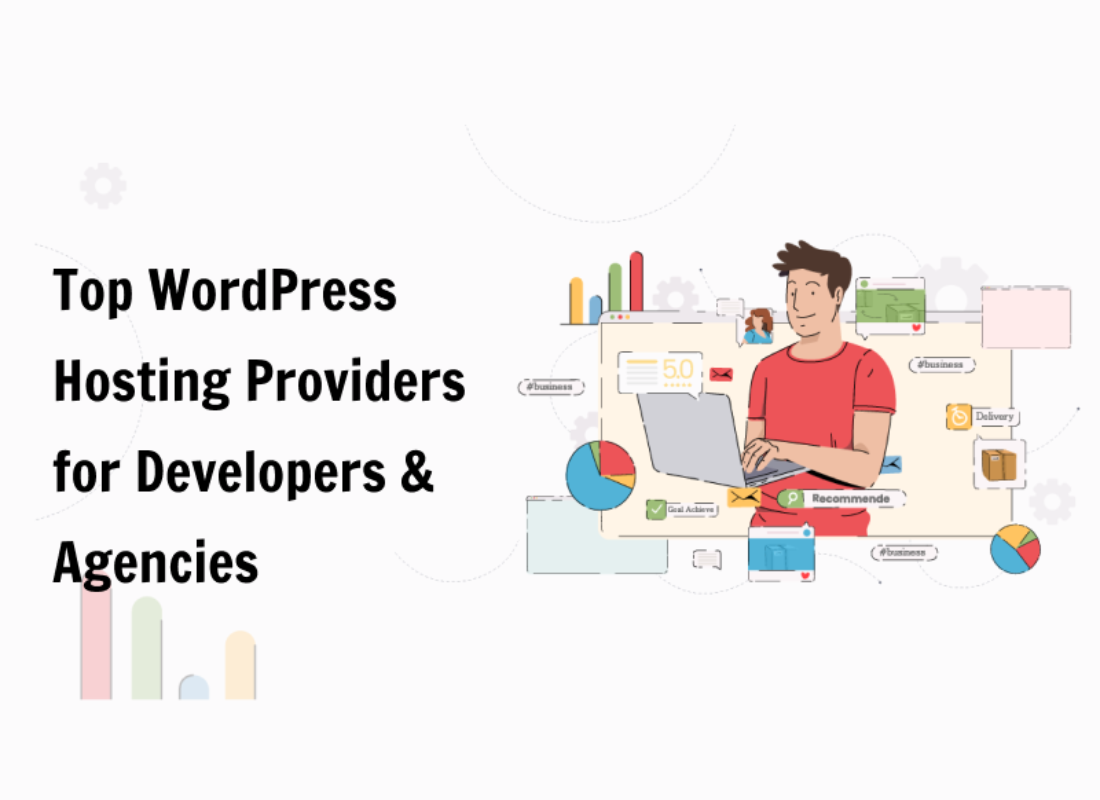Through various beginner web courses, you can learn JavaScript online and become the expert you’ve always wanted to be. Such an excellent place to begin your journey includes Codecademy, Udemy, edX, Pluralsight, and more. Besides the numerous free guides offered by W3Schools, of course. So, for beginners eager to learn JavaScript online, this free guideline article is for you.
Furthermore, if you are already into it, you can start by looking at the comprehensive Codecademy Review to help you decide the best way forward. Some training examples might be simplified to improve your reading and learning experience. All these websites offer free resources for learning software technologies online with comprehensive guides, references, and real-world examples.
Bearing that Java by Oracle is one of the world’s most popular programming languages, its affiliate coding language (JavaScript) has become a darling for many creative webmasters. Furthermore, it’s a Web programming language that is so easy to learn. Be that as it may, computer coding is one of the most valuable skills you can build, utilize, and make good money.
With that in mind, the learning speed is your choice in this beginner webmaster’s guide. The best thing about website design and development is that ‘everything is up to you.’ One thing is sure: if you are struggling, you only need to take a break for now. Or re-read the material more often—there’s no other best way to start than this guideline. So, follow our leads till the end!
Why Learn JavaScript Online?
JavaScript is a well-known client scripting language that is mainly focused on online web-based programs and browsers over the internet. Learning JavaScript will be helpful to you if you would like to build any applications or develop any tools. So, if you are interested in web development, you are advised to learn JavaScript free from online courses to shine in the job business market.
Before trying to learn JavaScript online, you must know it’s a lightweight, interpreted programming language. More specifically, it is designed for creating network-centric applications. But it’s complementary to and integrated with Java. Java by Oracle is a class-based, object-oriented programming language designed to have as few implementation dependencies as possible.
On the other hand, JavaScript is straightforward to implement because it is integrated with HTML. It is open and cross-platform. As we always say, here at jmexclusives, the only way to become a clever programmer is to Practice, Practice, and Practice! Then, Code, Code, and Code! In that case, Javascript is necessary for students and working professionals looking forward to a bright future.
To become great Software Engineers. Especially when they are working in the Web Development Domain, always ensure you understand all the “Try-it-Yourself” examples provided by W3Schools.
The Key Advantages For You To Learn Javascript Online
First, Javascript is the most popular programming language in the world, thus a programmer’s great choice. And once you learn Javascript, it helps you develop an excellent front-end web application. As well as back-end software using different Javascript-based frameworks like jQuery, Node.JS, etc.
Secondly, Javascript is everywhere! For one thing, it comes installed on almost every modern web browser. For example, Chrome, Mozilla Firefox, Safari, and every browser you know today supports Javascript. Also, you do not need any particular environment setup to learn Javascript.
Then again, Javascript helps you create a fantastic and crazy-fast website. You can even develop your website with a console-like look and feel. At the same time, give your users the best Graphical User Experience. On the other hand, its usage has now extended to mobile app development, desktop app development, and game development.
Get Started: JavaScript Online Course — Become An Expert Today!
This opens many opportunities for you as a Javascript Programmer. And then, due to high demand, there is tons of job growth and increased pay for those who know JavaScript. What’s more, you can navigate to different job sites to see what having JavaScript skills looks like in the job market.
Another great thing about Javascript is that you will find many frameworks and Libraries already developed for you. Some of these can be used directly in your software development to reduce your time to market.
Simply put, you can Master JavaScript with the most complete course (Udemy) on the market today. Whether you’re a beginner or even an advanced, you can join millions of learners from around the World too. Especially those who are already learning on Udemy! Save up to 90% from over 130,000 courses.
Some requirements to learn JavaScript are:
- No coding experience is necessary to take this course!
- They’ll take you from beginner to expert!
- Any computer and OS will work — Windows, macOS, or Linux.
- They will set up your text editor for the course.
- A basic understanding of HTML and CSS is a plus but not a must!
- The online course includes an HTML and CSS crash course.
NB: Their Selenium Courses are in 60+ Languages. You can see all the other course content for more details.
Hello World — Using Javascript!
There could be 1000s of good reasons to learn Javascript programming. But one thing is sure: to learn any programming language, not only Javascript, you need to code and code even more. And then, finally, code until you become an expert (like Joseph Mucira or Our CEO).
Want even better news in the wake of these encouraging stats? Learning JavaScript is as easy as starting with Codecademy tutorials and similar sites. And then moving on to paid, instructor-led classes like Skillcrush’s Web Developer Blueprint.
All I’ll need to do now is to give you a little excitement about Javascript programming. Whereby I’m going to provide you with a small conventional Javascript Hello World program. And in return, you too can try it using the Live Demo at a grander scale.
A Sample Illustration:
<html> <body> <script language = "javascript" type = "text/javascript"> <!-- document.write("Hello World!") //--> </script> </body> </html>
What Is A JavaScript Framework?
In general, many useful Javascript Frameworks and libraries are available for everyone. And although some are more advanced, they become resourceful as you continue to learn Javascript. So, when you start working with JavaScript, you’ll soon see references to JavaScript Frameworks.
Whether these references are in job listings, front-end developer forums, or articles about JavaScript, everyone seems to champion JS frameworks — but what is a framework? Think of building websites and web apps like building a house — when you set out to build a home, you could create all your building materials from scratch.
You can even start building without any schematics, but that approach would be incredibly time-consuming and doesn’t make much sense. You would likely purchase pre-manufactured building materials (wood, bricks, countertops, etc.) and then assemble them. Based on a blueprint to fit your specific needs.
Coding Is Very Similar!
When you set out to code a website, you could code every aspect of that site from scratch, but certain standard website features make more sense to apply from a template — if you need a wheel, for instance, it’s a lot more sense to buy one than it is to reinvent it. And that’s where JavaScript Frameworks come into play.
For instance, if you need a standard JavaScript photo carousel on a webpage, you can use code from a framework to provide the feature. While you spend more time coding your site’s unique aspects, you don’t have an easy plugin solution.
Likewise, this might sound familiar if you’ve heard of the singular JavaScript Library jQuery. But there’s a small (yet important) distinction regarding singular JavaScript Libraries versus JavaScript Frameworks.
Example Frameworks Include:
- Angular, React, jQuery, Vue.js, Ext.js, Ember.js, Meteor.js,
- Mithril.js, Node.js, Polymer.js, Aurelia, Backbone.js, etc.
Today, giving a complete list of all the available Javascript Frameworks and libraries is impossible. But, the above mentions are a good start. Why? Since the Javascript world is just too large and too much news is happening daily.
What Are JavaScript Libraries?
JS libraries like jQuery are used by plugging library code into the rest of your site’s code when needed. For instance, you would insert the appropriate jQuery code to use a jQuery template for an autocomplete feature.
It then retrieves the feature from the jQuery library and displays it on your user’s web browser. So, in other words, when a front-end developer uses a library like jQuery, the developer uses jQuery code to “call” the jQuery library, which then provides the requested content. When you’re trying to define a framework in the context of library vs. framework, think of it like this:
When you use JS frameworks, the process is more holistic. And there’s a reason — a framework doesn’t just offer an individual solution to a coding problem; it provides a structure (like a skeleton or a scaffolding…or a framework) that organizes the parts of your site where the framework is implemented.
Related Topic: 5 Common Jobs Requiring JavaScript Skills – QuickStart
This structure comes via page templates with areas set aside for code from the framework’s libraries (which the JavaScript framework “calls” on its own). The upside to using JavaScript frameworks is their overall efficiency and organization to a project — your code will be neatly structured, and the framework will provide readymade solutions.
More so for the most common coding problems. On the other hand, all of that structure can be the downside of working with a framework — any JavaScript code you write on top of JS frameworks needs to follow the rules and conventions specific to the framework, limiting your freedom when coding entirely by hand.
Which JavaScript Framework Are You Supposed to Use?
With some of those limitations mentioned above in mind, does using JavaScript frameworks mean the framework structure has to be applied to your entire site? Well, it depends.
While some frameworks are designed to live underneath all of your site or web app’s code, other frameworks — like the increasingly popular Vue (see below)—allow for incremental use. This means you can apply the framework to your website or web app as much or as little as you want.
As more frameworks have adopted this incremental model, JS frameworks have become an increasingly flexible way to provide structure when appropriate. While still giving front-end developers the freedom to hand-code when necessary.
Related Topic: What Kinds Of Jobs Can You Get With JavaScript Skills?
But, one of the confusing things about JS frameworks is that there isn’t one be-all, end-all JS framework to learn and use. At any given time, a handful of widely used popular frameworks reflect the latest JS trends and innovations.
There’s more extensively written content elsewhere about picking a JavaScript framework to learn first. But it’s worth looking at some current players to understand what’s out there and how they can be used. Website bestofjs.org aggregates the user popularity of different JavaScript frameworks.
They do so from GitHub’s coding site each year and publish their findings. In 2017, the most popular JS frameworks were Vue, React, and Angular — a trio of JS frameworks that give a good overview of the framework skills employers seek.
1. Vue
Vue is a framework that was released in 2014 but has become increasingly popular over the last few years. In 2017, Vue’s star ranking (user “likes”) on GitHub reached 40,000 (up from 26,000 in 2016). At the same time, this allows it to vault into the number one spot ahead of second-place React (at 28,000 stars). Vue’s accolades include a gradual learning curve (making it accessible to new JavaScript developers). This HTML-based syntax allows users to write pages in standard HTML format (instead of requiring the user to learn a framework-specific language) and the option to apply as much or as little of the JavaScript framework to your project as you want.
2. React
While technically a JavaScript library, React has been at the top of bestofjs’ popularity charts for years, and as a result, React has a large base of industry adoption reflected in developer hiring trends. According to data collected by the programming Q&A forum Stack Overflow, jobs targeting developers with React skills grew more than 150 percent on their job boards between 2015 and 2016. And just like Vue, React is designed for incremental implementation. Meaning it’s another tool that lets you use it as little or as much as you need. It also comes with a reputation for having a supportive developer community.
3. Angular
Finally, Angular is a complete 2016 rewrite of the Google-backed framework AngularJS. At number three on bestofjs’ 2017 list, an “Angular jobs” search on Indeed brings up over 14,000 job listings as of this writing. Angular has a somewhat steeper learning curve than frameworks like Vue. Since it uses a framework-specific JS variant language called TypeScript, you’ll also have to get familiar with it if you want to learn Angular. But, as you can see from the job listings, it’s a preferred standard for many employers.
The Best Practices To Learn JavaScript Online For Free
If you are a programming freak and wish to learn JavaScript free, this guide might greatly help you. Finding an apt source to learn something seriously is an excellent task. If you have found a wrong source that does not meet your requirements, all your invested time and money will end up with nothing. But no worries, these free JavaScript courses will give a clear view.
In particular, a clear view of all available free JavaScript courses online. After analyzing several user reports and feedback, we have gathered a list of free JavaScript courses available online. So, without wasting much time, have a glance at these resources and utilize them wisely!
1. Learn JavaScript Free: freeCodeCamp.org
- You can learn, write, and build codes for real-time projects from a curriculum-based platform, freeCodeCamp.org
- It is a platform where you must strengthen your coding skills and help other volunteers and campers seeking your support.
- In addition, this platform has a YouTube channel and a forum where you can help with other helpful skills like machine learning, Python, data science, web design, web development, and whatnot.
2. Learn JavaScript free: JavaScript for cats
- JavaScript for Cats is the best choice for JavaScript courses online free with beginner level JavaScript tutorial programs.
- Here, you can learn basic-level functions, data structures, fundamental programs, and libraries.
3. Learn JavaScript free: JavaScript 30
- JavaScript 30 helps you learn JavaScript free where you can build many coding things.
- This JavaScript certification free course offers the Day Vanilla JS Coding Challenge. In the end, you can build 30 different programs without any hustle.
4. Learn JavaScript free: CodeMentor
- If you want to learn JavaScript certification free within 4 weeks, CodeMentor is an impressive choice.
- You can learn free JavaScript courses and other JavaScript libraries like JSON, Angular JS, Ajax, jQuery, and more here.
- You can also book a mentor during the class ($15 per hour ) to clarify your doubts and queries during the session.
5. Learn JavaScript free: Codecademy’s intro to JavaScript track
- Codecademy’s Intro to JavaScript Track is a great tool to learn JavaScript free within 15 to 20 hours of tutorial programs.
- The inspiring part of this JavaScript certification free site is, that it offers a step-by-step tutorial system that is helpful for absolute beginners.
- At the end of the program, you will learn all JavaScript functions, loops, data structures and other data types.
- You can learn JavaScript Online for free and other programming languages like HTML, Python, SQL, and CSS.
6. Learn JavaScript free: Educative.io – Learn HTML, CSS, and JavaScript from scratch
- Educative.io – Learn HTML, CSS, and JavaScript from Scratch is a fantastic course offered by Educative, where you can learn JavaScript online.
- You can develop your web pages using JavaScript, HTML, and CSS at the end of this beginner course.
- Test-based exercises and interactive videos in the course keep you engaged and understand programming easily.
7. Learn JavaScript free: Fullstack Academy’s intro to coding
- Fullstack Academy’s Intro to Coding helps you understand the essential functions of HTML and CSS and where you can learn free JavaScript courses.
- If you are a beginner, 15 hours of this JavaScript certification free course is more than enough to understand the videos and challenges of programming.
8. Learn JavaScript free: Treehouse’s JavaScript basics
- Treehouse’s JavaScript Basics is a multi-level platform that comprises videos, tutorials, quiz programs, and tests that help you learn JavaScript online.
- Although this course is not entirely free, it has enough to help you quickly understand the basics of variables, data types, class statements, and essential programs.
9. Learn JavaScript free: JavaScript.info
- JavaScript.info is a website that focuses on JavaScript concepts and tutorials so you can easily learn JavaScript online.
- This site covers two different portions where you can learn JavaScript free and work with browser programs too.
- This also contains programming concepts for beginners and advanced readers.
10. Learn JavaScript free: Codecademy
- Codecademy needs a subscription to access JavaScript courses, and there are many JavaScript courses online, free from different tutors.
- This interactive free JavaScript course makes you understand the language with its programs and functions in your place and comfort.
11. Learn JavaScript free: MDN JavaScript
- MDN JavaScript comprises tutorials and modules that cover all JavaScript functions.
- This free JavaScript course is available in many languages, so you can prefer what you like.
- If you are a beginner and want to avoid common bugs and errors, you can prefer JavaScript Garden.
12. Learn JavaScript free: Sololearn
- Sololearn offers real-time coding practice. You can learn JavaScript for free, from beginners to advanced levels.
- Experts have formulated the modules and at the end of this JavaScript certification free course, you will earn valid certificates.
- If you want to switch to the PRO version of Sololearn, it costs around $12 per month.
13. Learn JavaScript free: TutorialRepublic
- TutorialRepublic offers all the essential fundamentals of the JavaScript program.
- This JavaScript free platform offers basic, intermediate and advanced level concepts with useful references and examples.
- It also contains several interactive tools like SQL Playground, Color Picker, HTML Editor, and more.
14. Learn JavaScript free: Learn Javascript online
- Developers from Google have created a Learn Javascript Online site with 40 plus free JavaScript courses.
- This tool will be a great workaround if you are looking for any project-based JavaScript Programs.
15. Learn JavaScript Free: edX
- edX offers a bundle of JavaScript courses online free that are collected and compiled by top rankers of several universities and prestigious schools.
- All the courses available in edX are 100% free JavaScript unless you need a certificate for your academic training.
Final Words;
The takeaway is that JavaScript frameworks are powerful for saving time and structuring your JavaScript code. Your specific JavaScript framework will vary based on project requirements and employer preferences. Whether you’re learning to code en route to a full-time career as a web developer or stockpiling tech skills to start a lucrative side hustle, JavaScript — as a scripting language — is your first choice.
With JavaScript, you can create things! Like photo slideshows, animated graphics, and interactive forms, it must be high on your list of front-end development skills to learn.
Related Topic: JavaScript Tutorial for Beginners: Learn Javascript Step-by-Step
Furthermore, a solid foundation in JavaScript will make it easy for you to pick up framework skills when needed. Also, because JavaScript (or JS) is at the heart of web development, it’s not surprising that it’s also at the forefront of developer jobs. To support this, a search on site Indeed jobs for JavaScript Jobs returns nearly 45,000 results as of this writing.
Glassdoor reports average base salaries for JavaScript developers at $72,500.
Other Useful Resources:
- Oracle Java Technologies
- JavaScript Courses & Tutorials | Codecademy
- Introduction to Java – W3Schools
- Java Tutorial – W3Schools
NB: Specifically, this tutorial has been prepared for JavaScript beginners. In that case, to help them understand the basic functionality of JavaScript. As well as to build dynamic web pages and web applications. As such, for this Javascript tutorial, the reader is assumed to have prior knowledge and skills in HTML coding.
Therefore, it would help if the reader had some prior exposure to object-oriented programming concepts. In addition to a general idea of creating online applications. Finally, if you need more support, you can Contact Us and let us know how we can help you. Also, feel free to share your additional opinions, thoughts, suggestions, contributions, etc. Or any more questions in our comments section.




